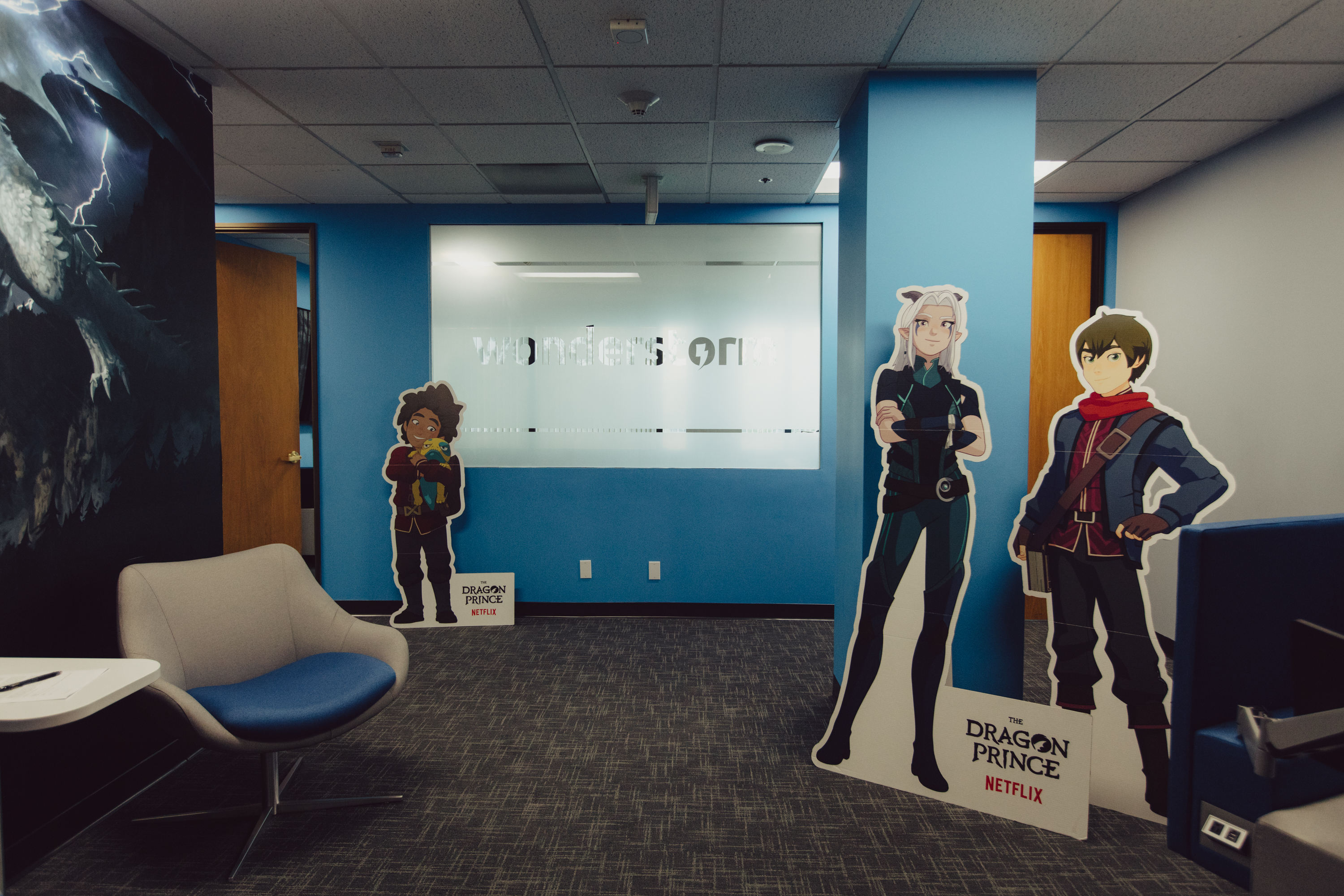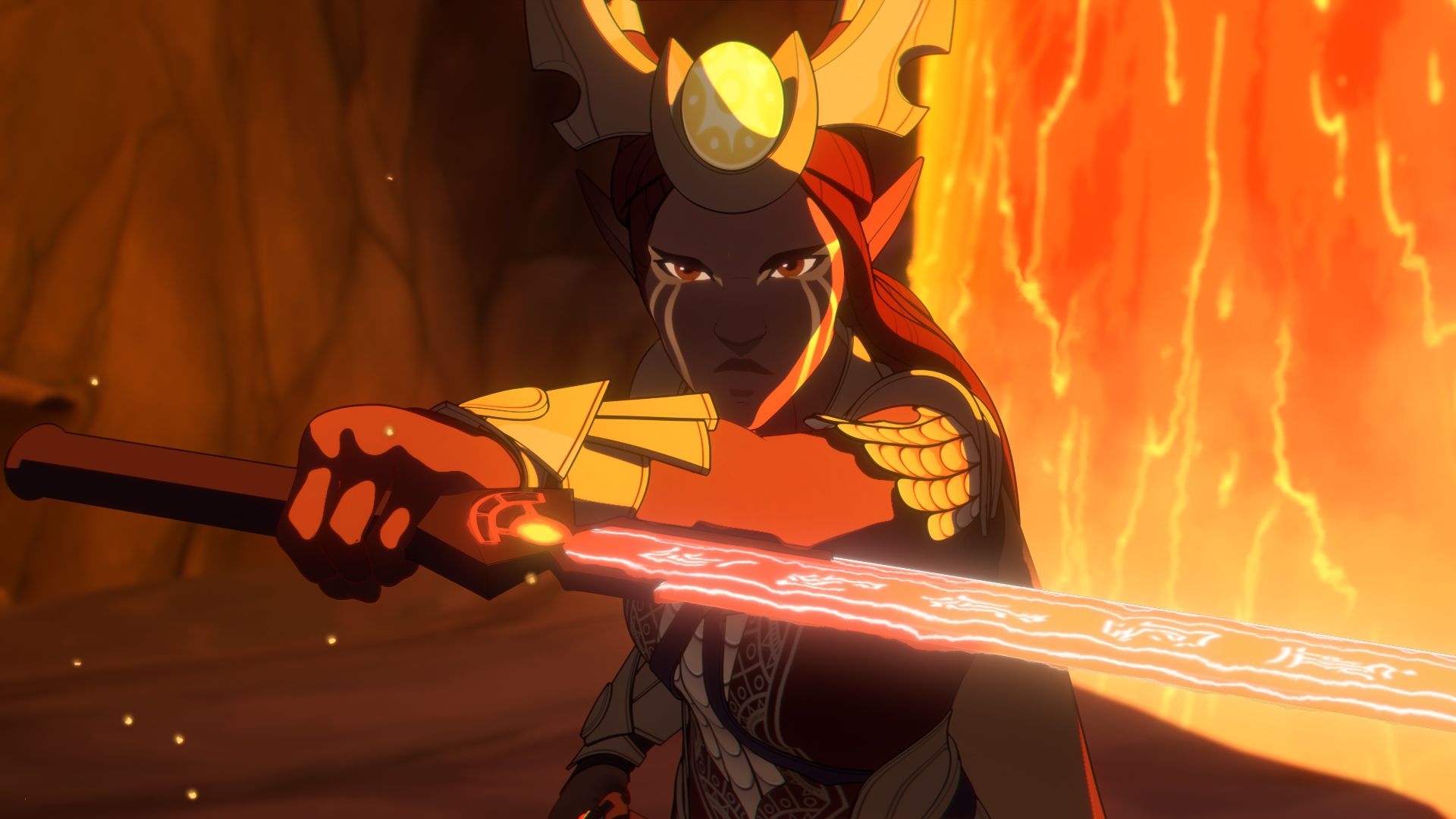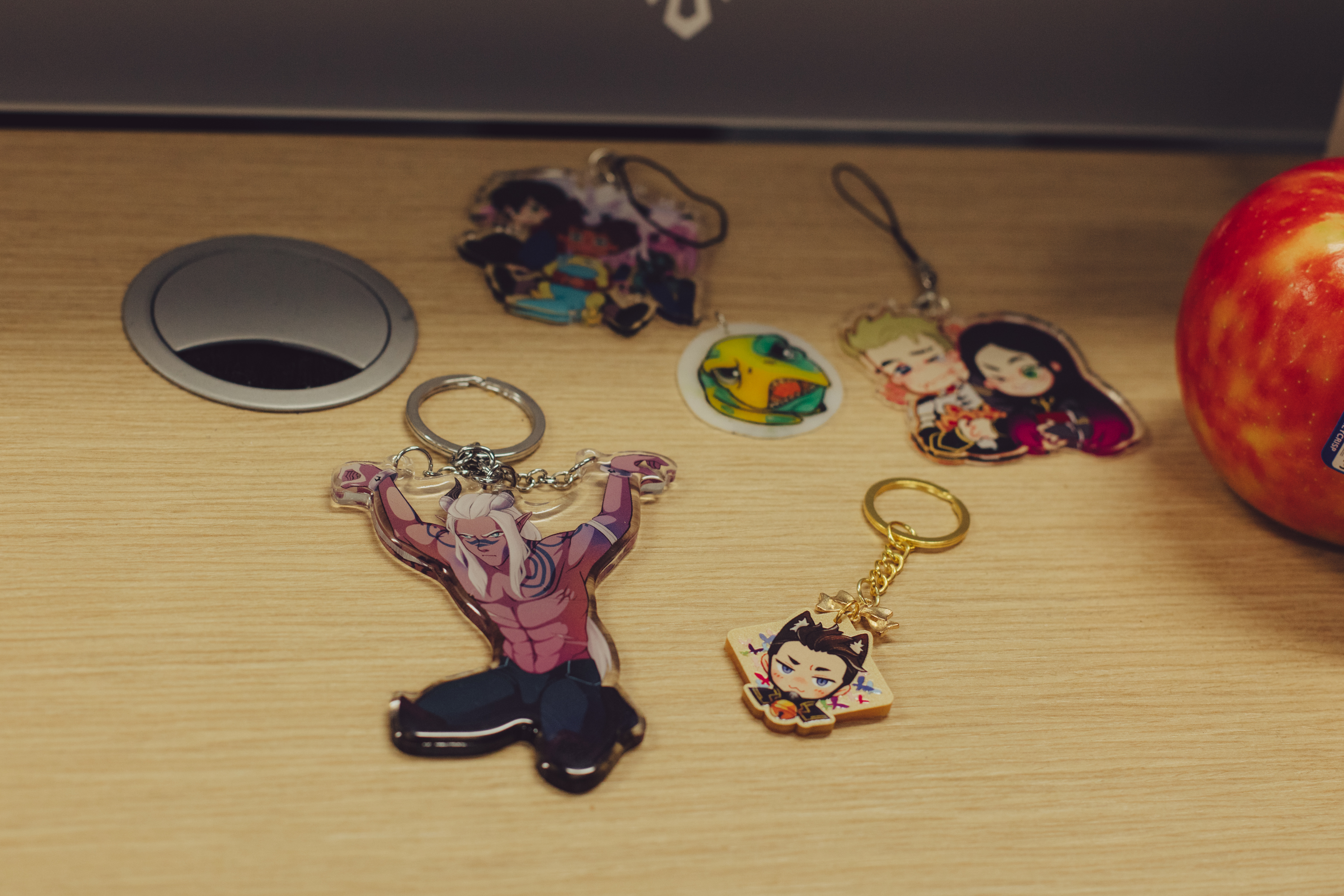Fantasy can be a hard genre to get into for the uninitiated. The landscape is dense with magical creatures and artifacts and the lore can feel insurmountable, full of silly made-up words and ridden with excessive violence and sexual exploitation—think Game of Thrones or Lord of the Rings. Maybe that's why it’s often fantasy geared toward children that has the most enduring appeal, even among adults. Everyone can appreciate a world designed to be explored by kids, and the best franchises build universes that get more complex the deeper you immerse yourself in them. If you’re writing with children it mind, it gives you the additional challenge of writing compelling stories that still appeal to parents, “without the adult intrigue,” Aaron Ehasz, co-creator of The Dragon Prince, said.
The Dragon Prince is the next all-ages fantasy series that takes the mantle from classics like Harry Potter and The Hobbit. The first season, which ran on Netflix in September, while robust, seemed mostly concerned with world-building and laying the groundwork for future stories. The second season, dropping on Friday, is a well-crafted payoff that delivers on the promises of the first thanks to its focus on character development and its dedication to revitalizing old fantasy tropes to suit a more emotionally intelligent viewer in 2019.

Like its forebears, The Dragon Prince has all the trappings of an enduring fantasy show. Three young adventurers are on a quest of worldly importance that both imperils them and teaches them valuable life lessons. It's escapism, but it also ultimately shines a light on universal aspects of the human condition. The first season is essential viewing to establish the show’s larger plot, involving the banishment of humans from the magical realm of Xadia and a brewing war between humankind and magical creatures. It also introduces you to the main characters—moonshadow elf assassin Rayla, prince Ezran, and his half-brother Callum—all journeying from the human kingdoms of Katolis to return baby dragon Azymondias (Zym, for short) to his mother.
The second season arrives with incredible velocity—within the first ten minutes you’re already treated to thrilling combat sequences involving sunfire elves and their indestructible sun-forged weapons. But these pyrotechnics aren’t the show’s only claim to greatness. Holding everything together are characters who are cartoons but never cartoonish. They tend to approach each other in good faith and empathy, and are typically willing to apologize and acknowledge their own mistakes. Even villains act with virtue. When siblings Soren and Claudia are charged with tracking down the heroes, they often choose to be supportive of one another even at the expense of ruining a mission. It’s a great fulfillment of Wonderstorm’s (the studio behind The Dragon Prince) philosophy of “vulnerability as a strength rather than a weakness,” as co-creator Justin Richmond described.

This also introduces an organic complexity to The Dragon Prince, where young characters learn to cope and adapt in response to changing information. Young viewers are able to see positive change coming from a single person looking beyond the biases they’ve grown up with. Notably, the series opens with Rayla—who has trained her whole life to avenge the death of the dragon king—deciding to spare her first human targets, turning her back on her culture even though it means a magical wrist binding will grow tighter each day Ezran remains alive.
But adult viewers also never feel condescended to or shortchanged. Unlike animated sitcoms that tend to reset characters at the end of each episode, characters in The Dragon Prince suffer physical injuries and emotional pain. Actions have consequences. Amaya, leader of the Standing Battalion—an army that guards the border between Xadia and Katolis—sports a facial scar that acts as a visual signal to the pains and losses of battle. Some of these battles are simply unwinnable for one side or another, and characters die. This is one of the many ways it will deliver for fans of Avatar: The Last Airbender, who grew up with the show, and can now enjoy The Dragon Prince’s similar depth.
“We make our show for smarter older kids, ages nine to 12,” Ehasz said. “Maybe they don’t get every layer, but it treats them as intelligent and capable of engaging with a deeper story with real, dimensional characters. It's built for that audience but it’s also built for cool adults. We want it to be for someone who embraces fantasy, and storytelling."
This approach allows The Dragon Prince to revitalize the trope of parental loss, which has been mostly stripped of meaning in the Disney-fied and Marvel-ized narratives of orphaned princesses and young boys who get bit by a spider or bombarded with bats. The death of King Harrow—who is introduced as a idealist ruler and father—is treated with genuine respect and gravitas. He is mourned, but his death doesn’t launch him into the kind of martyrdom that exempts him from being held accountable for his actions. The question of "goodness" is open for debate. King Harrow's idealism and altruism evidently play a significant role in his own demise. Likewise, Rayla reckons with the question of whether to tell Callum and Ezran—his children, and her companions on the quest to return Zym to Xadia—news that will hurt them and potentially rupture their burgeoning trust.
The show is also impressively inclusive, which is a welcome relief from fantasy shows that feature entirely white, abled-bodied characters and lean on the notion that magical creatures can act as a proxy for human diversity. King Harrow is brown-skinned, and his son is multi-ethnic. Amaya is deaf and uses sign language as a combat asset. (There’s also a great season two easter egg for viewers who understand American Sign Language.) There are hints that future episodes will contain queer romance. And the creators have acknowledged their commitment to making sure The Dragon Prince doesn’t use the “bury your gays” trope—in which LGBTQ characters are killed off for the sake of developing the straight protagonists—that Netflix’s Voltron fell into in 2018.
This makes the fandom particularly exciting to participate in. So many shows live and die by the strength of their fans—think about The Expanse, which was canceled on Syfy but resurrected on Amazon thanks in part to its active fanbase that fought to #SaveTheExpanse. Wonderstorm’s community manager, Danika Harrod, is keenly aware of this as she manages social accounts on platforms like Twitter, Instagram and Tumblr and orchestrates fan facing content strategy.
Harrod (who previously worked for Waypoint, VICE’s gaming site) makes The Dragon Prince community feel more cohesive than most. She dispenses brilliant memes celebrating individual characters and updates a height and birthday chart to celebrate the release of additional characters. She also tweaked the formula for the way many shows' social accounts operate, inviting fans to do photoshop battles and sharing non-explicit fan art across main accounts. Character releases are teased across platforms, giving fans something to look for even when new episodes aren't coming out.
“We’ve gotten into the habit of checking our social media every morning, to check out fan art, cosplay, and fan theories,” Harrod said. “We love them and we can’t wait to see what they think about season two.”

Rather than existing primarily on independent subreddits or Tumblr fan accounts, the fandom is a formally organized, powerful entity. Fans regularly will tweet about how much they love "whoever manages the fandom." This all makes the relationship feels participatory and fully two-sided.
The office has fan artwork tacked on the walls, and Harrod collects keychains and pins from fan artists. Knowing you have a community behind you makes inside jokes—like Bait’s grumpiness or “human Rayla”—that much funnier. And it makes the characters feel so much like personal friends that you invest in their success, ship them romantically (don’t get me started on my dream of seeing Soren and Corvus together), and pray that Netflix will keep renewing The Dragon Prince so you can see what's next.
Sign up for our newsletter to get the best of VICE delivered to your inbox daily.
Follow Nicole Clark on Twitter.
from VICE http://bit.ly/2TR6nGD
via cheap web hosting
No comments:
Post a Comment